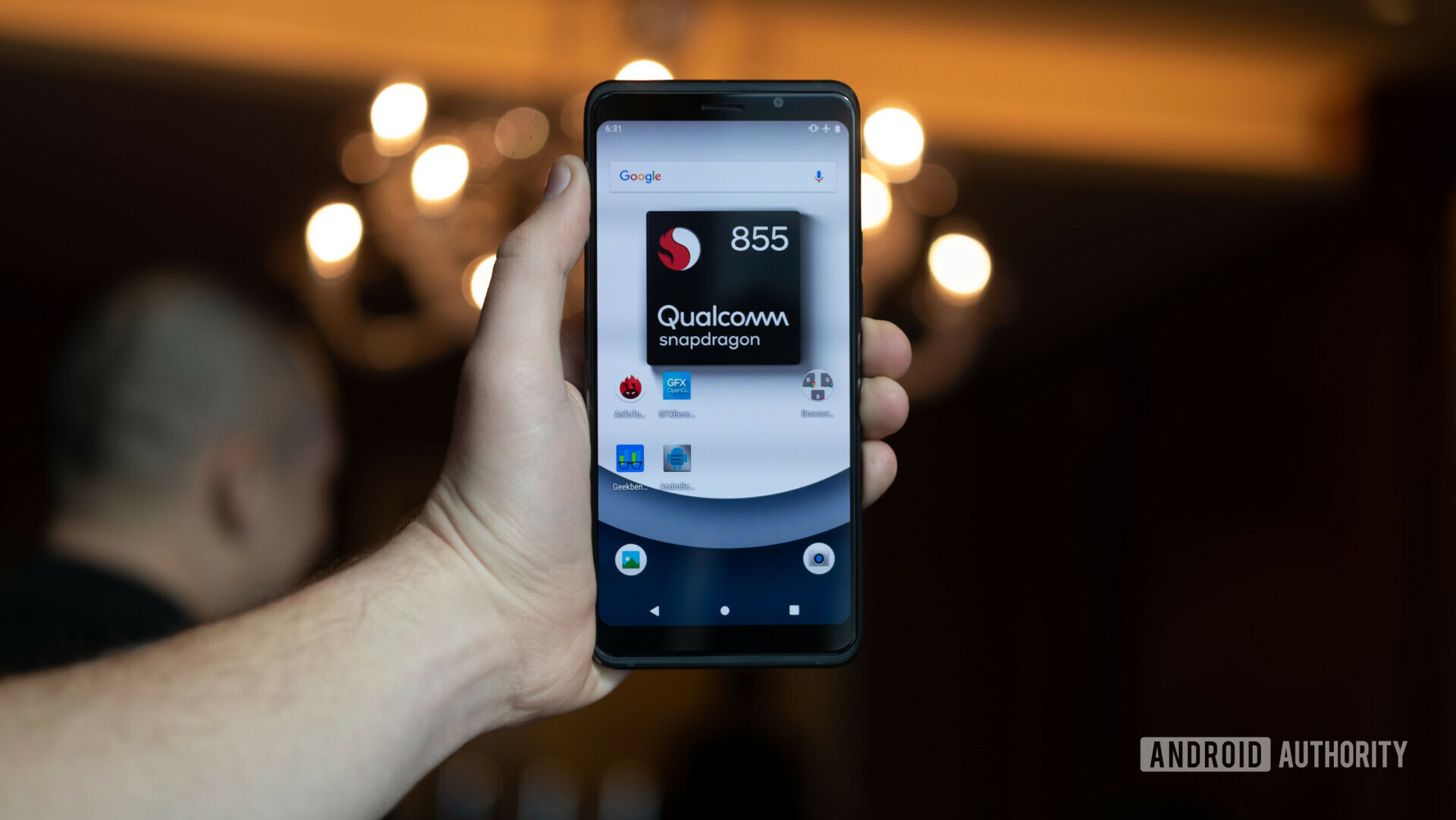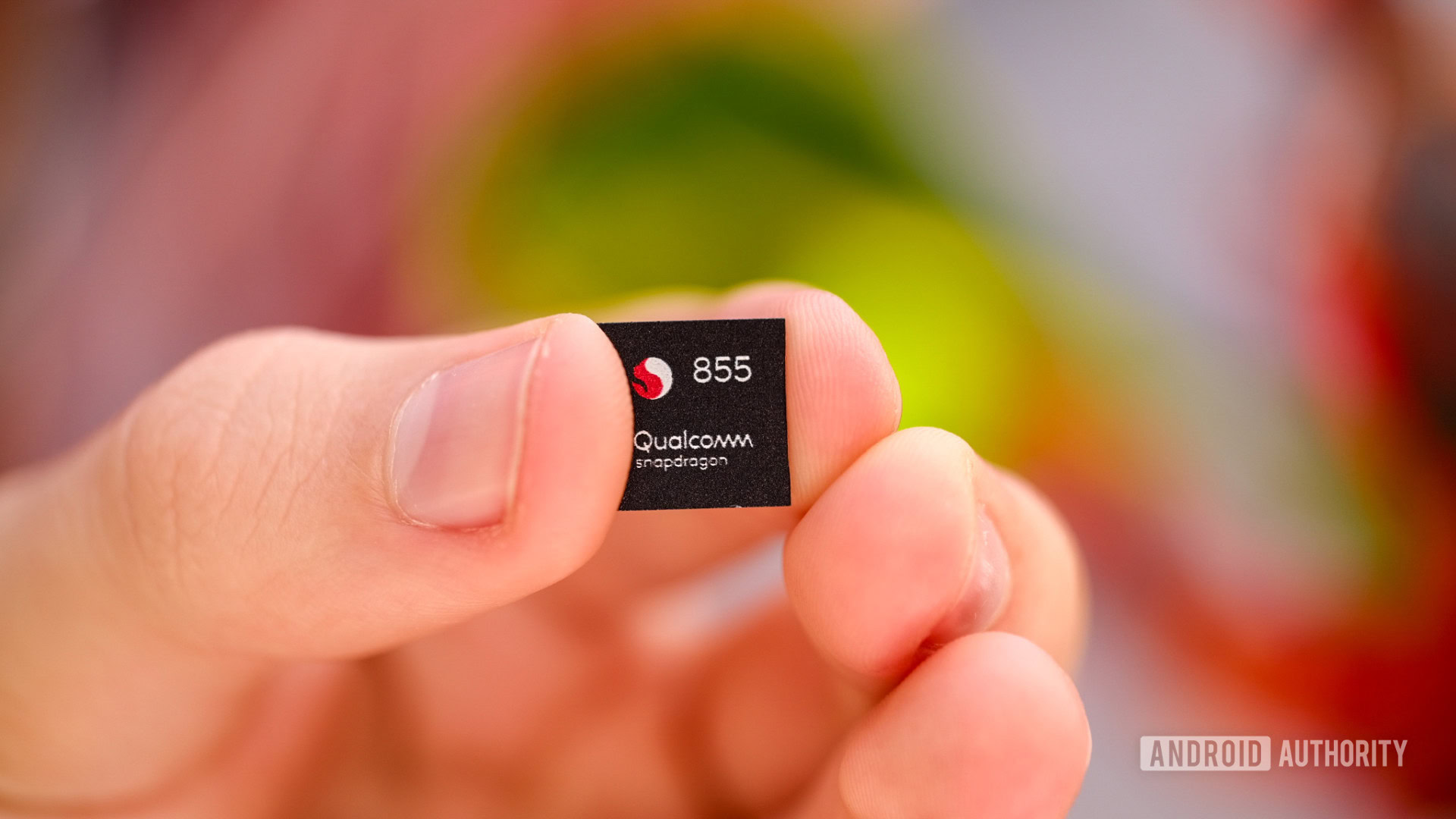Affiliate links on Android Authority may earn us a commission. Learn more.
Qualcomm Snapdragon 855 vs 845: Worth the upgrade?

There’s a new king in town for smartphone performance – the Snapdragon 855. Unveiled last year, Qualcomm’s high-end mobile platform boasts another generational leap in performance as well as some notable firsts for the mobile industry. Today, we’re going to pit the old against the new in this Snapdragon 855 vs 845 comparison.
For a super close look at each of these chipsets, be sure to check out the Snapdragon 855 and Snapdragon 845 deep dives as well.
Specs showdown: Snapdragon 855 vs 845
One of the most obvious starting points to compare the Snapdragon 855 vs 845 is the manufacturing process. The Snapdragon 855 is Qualcomm’s first 7nm FinFET chip, compared to 10nm FinFET for the Snapdragon 845. This smaller process node means smaller chips and greater energy efficiency, which can be put towards additional performance if desired.
The Snapdragon 855 also marks Qualcomm’s first “tri-cluster” CPU design. Rather than a traditional four big and four little core design, the Snapdragon 855 moves to a one huge, three big, and four small design. The huge core is a highly clocked Arm Cortex A76 based CPU design, with a few Qualcomm tweaks. This core offers a higher peak clock speed and more cache memory than the other big cores, providing a major boost to performance over the Snapdragon 845’s Cortex-A75 based cores.
The GPU update is a little more traditional, bumping up from an Adreno 630 to an Adreno 640. Qualcomm estimates a 20 percent performance boost between generations but doesn’t give anything else away about any other improvements made in the graphics department.
| Snapdragon 865 | Snapdragon 855 Plus | Snapdragon 855 | |
|---|---|---|---|
CPU | Snapdragon 865 1x 2.84GHz Kryo 585 (Cortex A77) 3x 2.4GHz Kryo 585 (Cortex A77) 4x 1.8GHz Kryo 585 (Cortex-A55) | Snapdragon 855 Plus 1x 2.96GHz Kryo 485 (Cortex A76) 3x 2.42GHz Kryo 485 (Cortex A76) 4x 1.8GHz Kryo 485 (Cortex-A55) | Snapdragon 855 1x 2.84GHz Kryo 485 (Cortex A76) 3x 2.42GHz Kryo 485 (Cortex A76) 4x 1.8GHz Kryo 485 (Cortex-A55) |
GPU | Snapdragon 865 Adreno 650 | Snapdragon 855 Plus Adreno 640 | Snapdragon 855 Adreno 640 |
DSP | Snapdragon 865 Hexagon 698 | Snapdragon 855 Plus Hexagon 690 | Snapdragon 855 Hexagon 690 |
Modem | Snapdragon 865 X55 5G & RF system 7500 Mbps down 3000 Mbps up | Snapdragon 855 Plus X24 LTE 2000 Mbps down 316 Mbps up | Snapdragon 855 X24 LTE 2000 Mbps down 316 Mbps up |
Cameras | Snapdragon 865 200MP single / 64MP single with Zero Shutter Lag 24MP dual camera Hybrid AF, HDR video, multi-frame noise reduction | Snapdragon 855 Plus 48MP single / 24MP dual Hybrid AF, HDR video, multi-frame noise reduction 192MP snapshot | Snapdragon 855 48MP single / 24MP dual Hybrid AF, HDR video, multi-frame noise reduction 192MP snapshot |
Quick Charge | Snapdragon 865 4+ | Snapdragon 855 Plus 4+ | Snapdragon 855 4+ |
Bluetooth | Snapdragon 865 5.1 | Snapdragon 855 Plus 5.1 | Snapdragon 855 5.1 |
Process | Snapdragon 865 7nm FinFET | Snapdragon 855 Plus 7nm FinFET | Snapdragon 855 7nm FinFET |
Other notable improvements to the 855 include the introduction of 8K and 360-degree video recording capabilities, along with a hardware H.265 and VP9 video decoder. This change lowers power consumption when playing back high-quality video files. The chip also boosts AI performance with a new Hexagon 690 vs Hexagon 685 DSP. There are lots of major changes here, including the introduction of a Tensor processor and a doubling of Vector performance.
The 855 features Qualcomm’s X24 LTE modem for 2Gbps down and 316Mbps up. That’s a fair bit faster than the 1.2Gbps download speeds on offer from the Snapdragon 845’s X23 LTE modem. Although real-world speeds will likely be much closer between the two.
5G support is a bit more complicated. The first 5G smartphones utilize the Snapdragon 855, but there’s no 5G modem included in the die. 5G phones have to make use on an additional, external Snapdragon X50 5G modem.
Show me the benchmarks
Our own Gary Sims already performed an early test of the Snapdragon 855 using a Qualcomm Reference Device. We now also have our first handsets utilizing the Snapdragon 855 to throw into the mix. We’ve run a bunch of benchmarks on the Samsung Galaxy S10 Plus and the Xiaomi Mi 9, which we can compare against last generation products.
AnTuTu gives us a good look at overall system performance, while GeekBench gives us a closer look at single and multi-core CPU performance. I’ve thrown in a 3DMark score for GPU capabilities, although we didn’t run this test on the Qualcomm Reference Design handset back at CES 2019.
Taking an average for each chip, single-core CPU capabilities make the biggest leap out of all these tests, up a whopping 46 percent versus the Snapdragon 845. This is undoubtedly due to the new Cortex-A76 based Kryo 485 CPU design, with the main single core offering higher peak clock speeds and a big 512kb L2 cache, compared to 256kb for the three other big cores.
Multi-core performance sees a smaller but still impressive 29 percent boost to performance. Again, the new Cortex-A76 based big cores offer up more performance than the Cortex-A75 based Snapdragon 845, despite the lower clocks. GPU performance is a little more muted, although still a notable upgrade clocking in at a 19 percent upgrade. That improvement could definitely smooth out frame rates on more demanding games when using a Snapdragon 855 vs 845.
Overall, the Snapdragon 855 is about 29 percent faster across all system performance in AnTuTu. Of course, these benchmarks aren’t always reflective of real-world workloads. Furthermore there are other important factors not accounted for here, including AI performance and video encode/decode.
System-wide, the Snapdragon 855 is about 29 percent faster than the 845.

Beyond benchmarks: What else is new?
Benchmarks are all very well and good, but we can’t exactly complain that Snapdragon 845 powered handsets are sluggish. Gamers will obviously appreciate the higher frame rates, but how does it most benefit average consumers? Good question.
Compared to the Snapdragon 845, the 855 boasts enhanced machine learning and number crunching capabilities. This opens the door for superior real-time objection and facial detection, with implications for mixed and augmented reality. The chip’s new CV-ISP (computer vision image signal processor) is powerful enough to perform software bokeh blur on 60fps 4K HDR video, along with object and body tracking for VR.
Combine all this with better image processing, superior Bluetooth audio via aptX Adaptive, and support for 8K video recording, and the big attraction of the Snapdragon 855 vs 845 is the new user experiences on offer. Of course, this will all depend on what Qualcomm’s smartphone partners decide to do with their phones. That should be the bigger determining factor in whether or not to upgrade.
What do you think about the Snapdragon 855 vs 845?